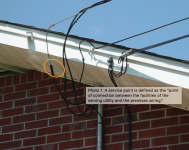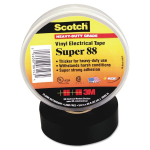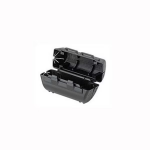six73
Member
- Location
- Atlanta, GA
- Occupation
- Electrical Inspector (ICC E-2)
I saw a new overhead service point installation at a single family home yesterday that had the connectors just wrapped in electrical tape. This really rubs me the wrong way and I prefer to see the solid coupling covers, but as far as I can tell this is (or could be) technically OK per 2020 NEC. Can someone check my reasoning here? The attached picture is one I found onine while researching this, I circled what I'm referring to as a coupling cover.
- The NEC applies to service points (and I don't see any reference at all about the specifics of service point connections in the utility builder guide).
- The physical connection at the service point is simply a splice, covered under 110.14(B): "...All splices and joints and the free ends of conductors shall be covered with an insulation equivalent to that of the conductors or with an identified insulating device."
- Based on another thread I saw on this forum it sounds like electrical tape could qualify as "insulation equivalent", but how much tape would it take to meet that? I know decent tape is listed for up to 600V, but I'd be wary of just a wrap or two actually providing sufficient insulation (never mind the fact that electrical tape exposed to the elements is going to deteriorate pretty quickly).
Just for my own edification, what is the common name of the crimp-on connectors used for service point connections, and is there another name used for the coupling covers?
- The NEC applies to service points (and I don't see any reference at all about the specifics of service point connections in the utility builder guide).
- The physical connection at the service point is simply a splice, covered under 110.14(B): "...All splices and joints and the free ends of conductors shall be covered with an insulation equivalent to that of the conductors or with an identified insulating device."
- Based on another thread I saw on this forum it sounds like electrical tape could qualify as "insulation equivalent", but how much tape would it take to meet that? I know decent tape is listed for up to 600V, but I'd be wary of just a wrap or two actually providing sufficient insulation (never mind the fact that electrical tape exposed to the elements is going to deteriorate pretty quickly).
Just for my own edification, what is the common name of the crimp-on connectors used for service point connections, and is there another name used for the coupling covers?




